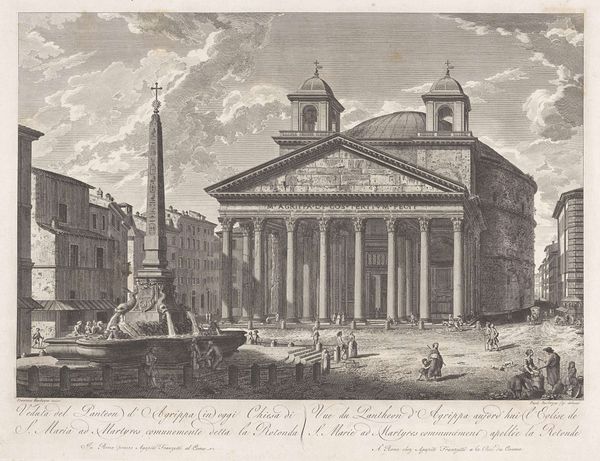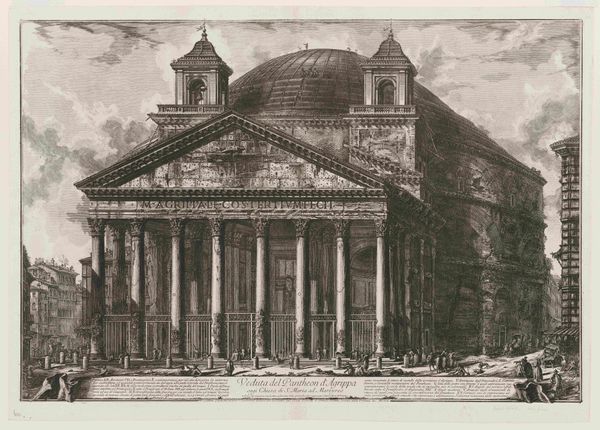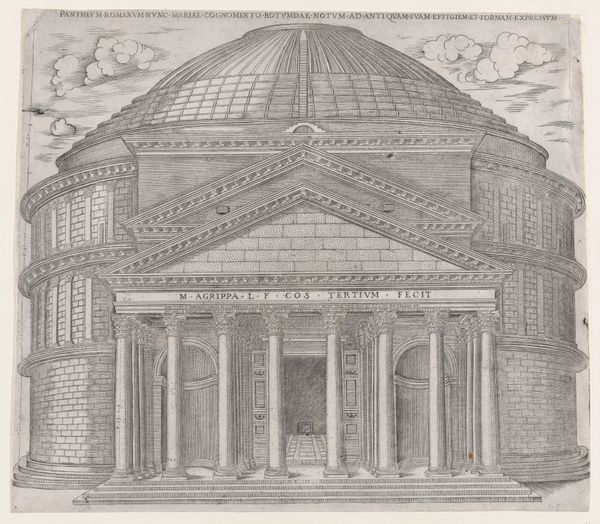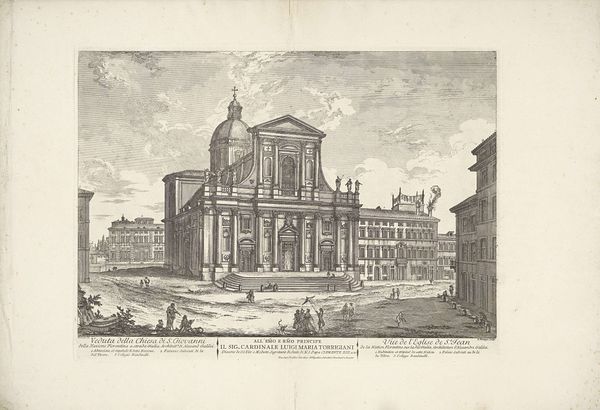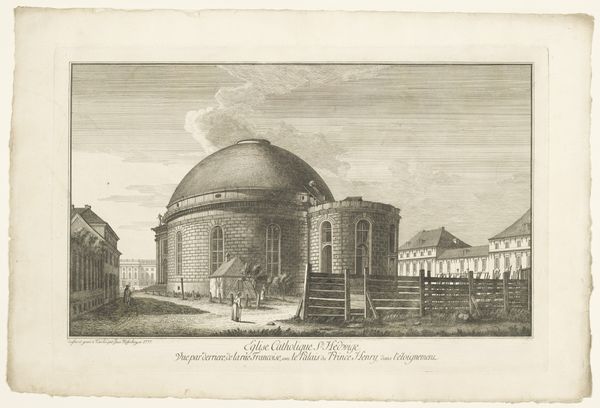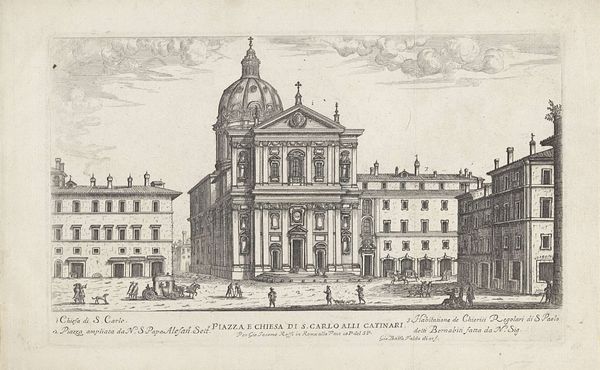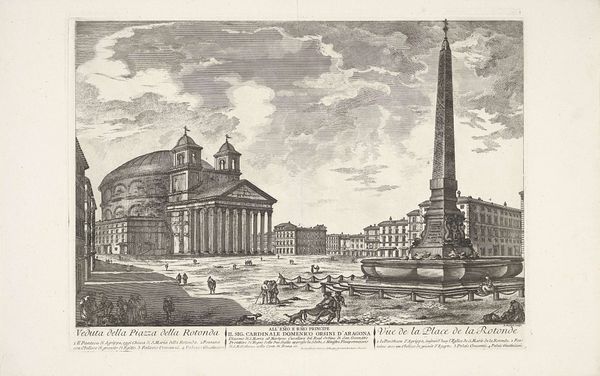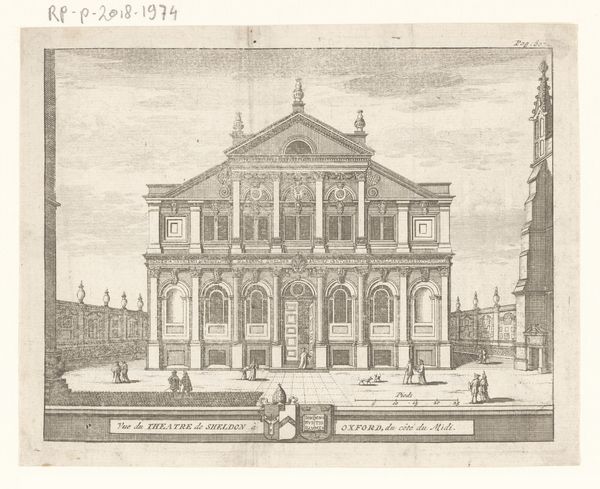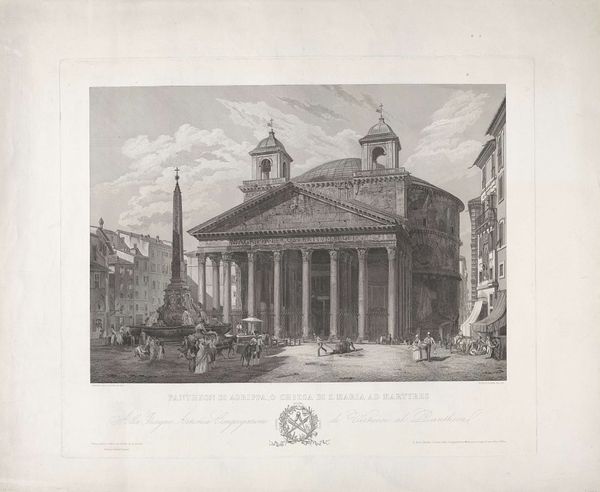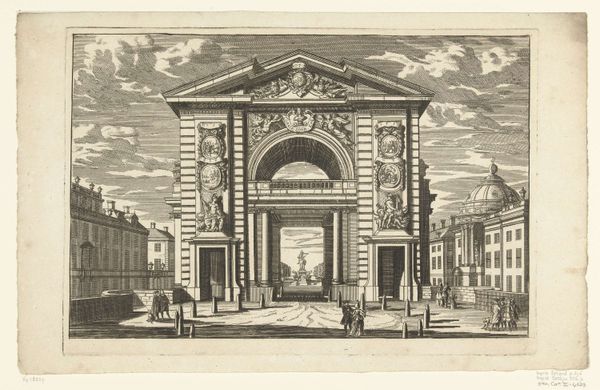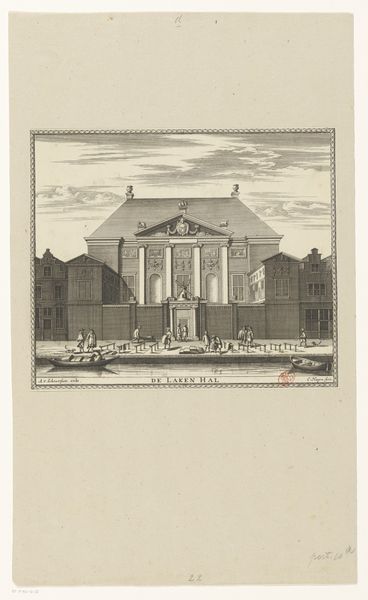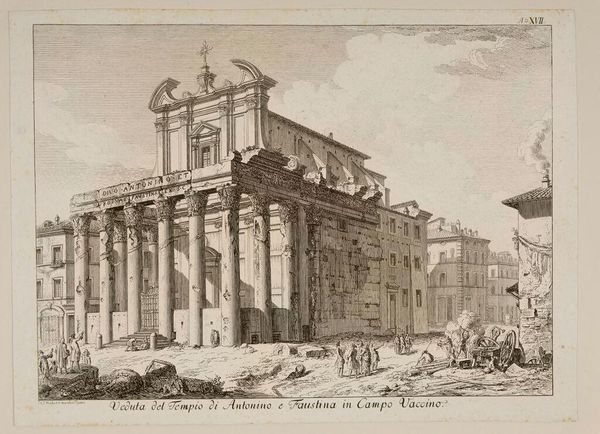
print, engraving, architecture
#
baroque
# print
#
perspective
#
cityscape
#
engraving
#
architecture
Dimensions: height 164 mm, width 191 mm
Copyright: Rijks Museum: Open Domain
This print of the Pantheon in Rome was made by an anonymous artist, using etching. The Pantheon, originally a Roman temple, was repurposed as a church in the 7th century. This print offers insight into the cultural reverence for classical architecture during the early modern period. The Pantheon, with its imposing dome and Corinthian columns, symbolized the grandeur of the Roman Empire, and this print served to disseminate its image across Europe. Prints like this played an important role in shaping architectural tastes and influencing the design of buildings across Europe and in the colonial Americas. The Pantheon represented an ideal, and studying its visual representation was part of any architect's training. To fully understand the print’s significance, we might look at architectural treatises of the period, travel journals of aristocrats on the Grand Tour, and the history of the institutions which trained artists and architects. The meaning of art lies not only in its aesthetic qualities but also in the social and institutional contexts that shape its production and reception.
Comments
No comments
Be the first to comment and join the conversation on the ultimate creative platform.
